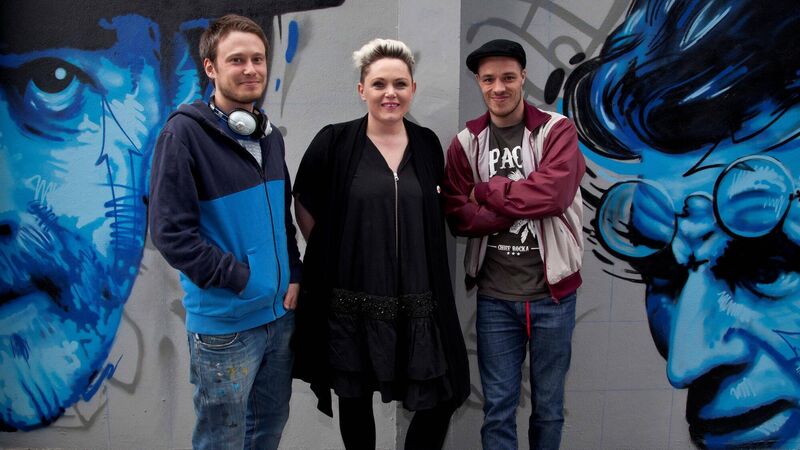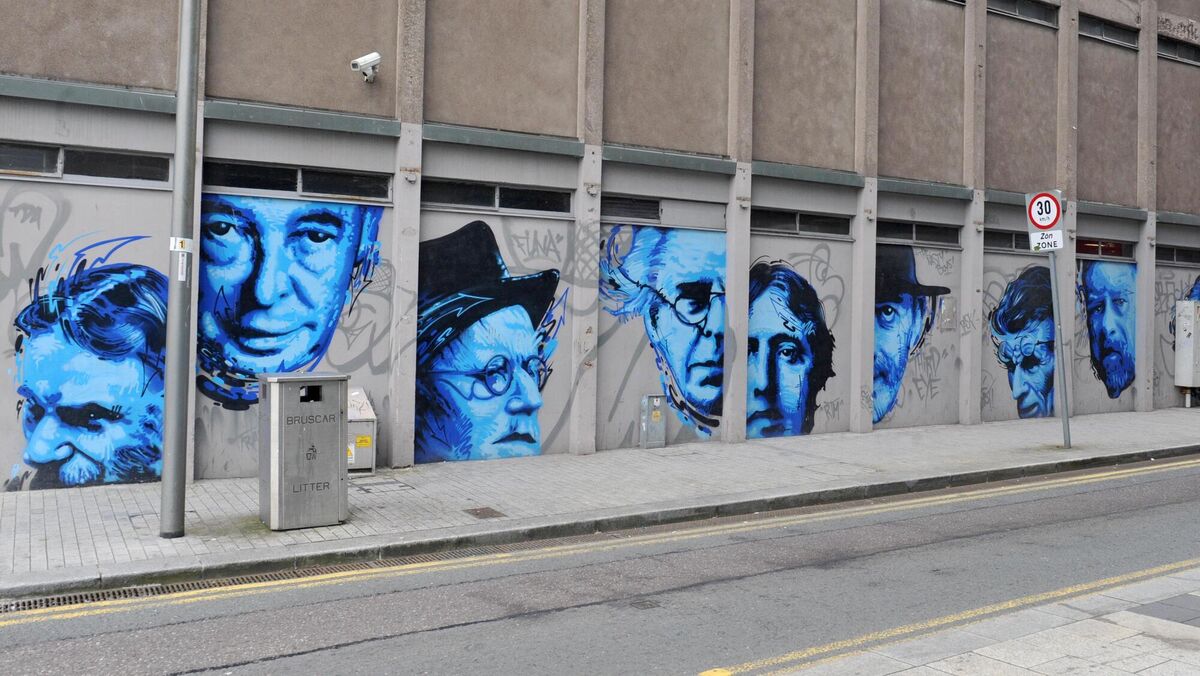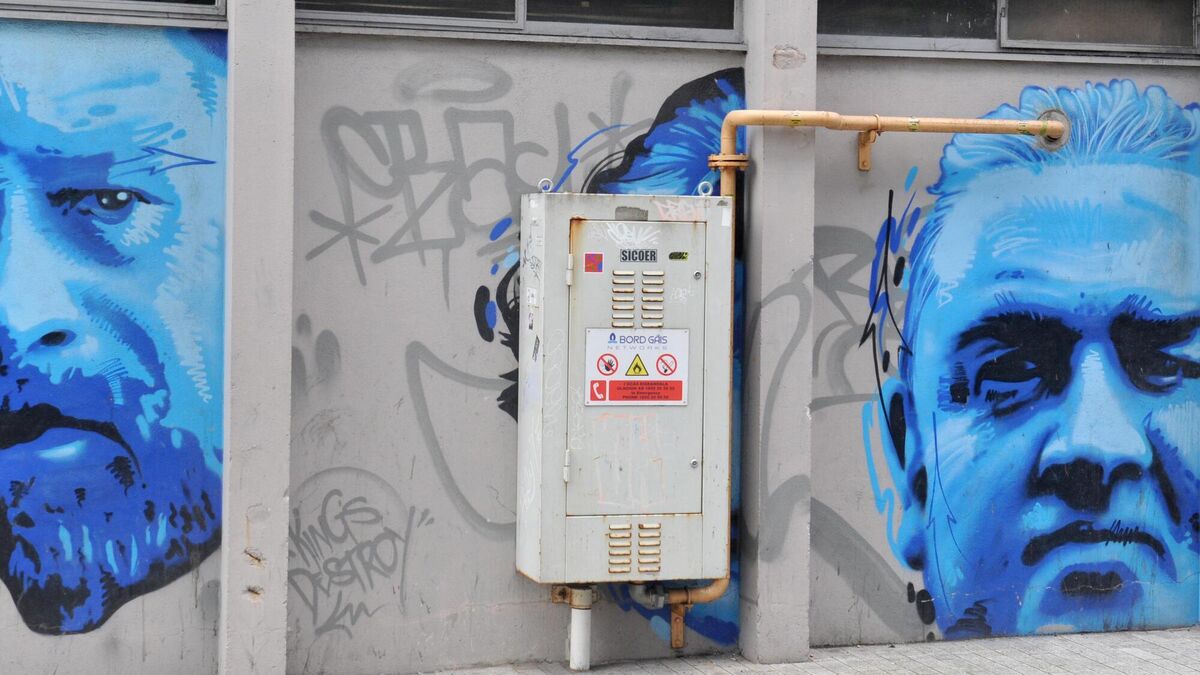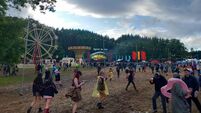Cork In 50 Artworks, No 20: Mural on Opera House wall, Half Moon Street

Mary Hickson of Cork Opera House with artists Psychonautes and Dusto in 2013. Picture: Clare Keogh
If you look the mural filling the various spaces of the Opera House Wall on Half Moon Street in Cork, it would be easy to surmise it had been targeted by graffiti. Actually, those tags were all part of the plan.
Street artist Adam 'Dusto' O’Connor, who created the mural with French artist Psychonautes, recalls how the brief was that the Opera House was unhappy with illegal graffiti on the wall, and wanted to get rid of it.
Not expecting to get the commission, the duo's pitch seemed to go against that brief, proposing to incorporate the existing graffiti into their mural. To their surprise, their pitch was successful.
The 2013 piece would also feature stylised portraits of major Irish literary figures such as George Bernard Shaw and WB Yeats, as well as Cork authors Theo Dorgan and Cónal Creedon.
“We said we’d draw up something which would have graffiti in the background but which would put something beautiful over that graffiti, and we thought about what the Opera House is famous for, and that just led us to Irish writers,” says Dusto from his home in Uxbridge, London.
“We picked the ten writers featured because we talked to a lot of people and those were the names which kept coming up. We wanted a Cork writer, and everyone said Cónal Creedon.”

The artwork was commissioned by Mary Hickson, then chief executive of the Opera House, in collaboration with the Camden Palace Hotel Arts Collective, and Flava Floors, and funded by the Dulux 'Let’s Colour' scheme.
Dust likens the effect he and Psychonautes used in the mural to the topographical layers depicted in maps, working in four tones of spray paint, dark blue to light blue, manipulating the portraits until they were happy with the results.
“We would take the darks into the lights, and the lights into the dark, dragging a detail out of the dark or the light into the next colour below, which would then highlight each colour on top of each other. We were just bringing each colour over and back to each other. It was done quite organically,” he says.
“We incorporated the graffiti that’s behind it, random tags, and it just gave it that edginess. All over the world, graffiti artists consider themselves writers, so for us this was an opportunity to honour great Irish writers, while incorporating the writing, or the graffiti, of other graffiti artists.”

Since the piece was completed, Cork Opera House underwent renovations, and part of the mural was affected. Not surprisingly, the artists weren't thrilled.
“It was a bit disrespectful to just cover up Maeve Binchy, and I felt sorry for Cónal Creedon getting a pipe through his head,” says O’Connor, adding that the complete mural is meant to be one piece.
“It’s like tearing a page out of a book,” he says.
For their part, Opera House management say they are open to finding ways of restoring the mural to its former glories.
These days, Psychonautes is a working artist in his native France. Dusto lives on a narrowboat near Uxbridge, and works as an artist. The Mourneabbey native has an eye on eventually moving home, and he says he has lots of ideas for more street art for Cork, the city in which he says his heart is.
Looking at recent photographs, Dusto says it’s nice that graffiti artists have respected the mural, and – with one exception – the only graffiti on the wall is that which they incorporated into their original work.


